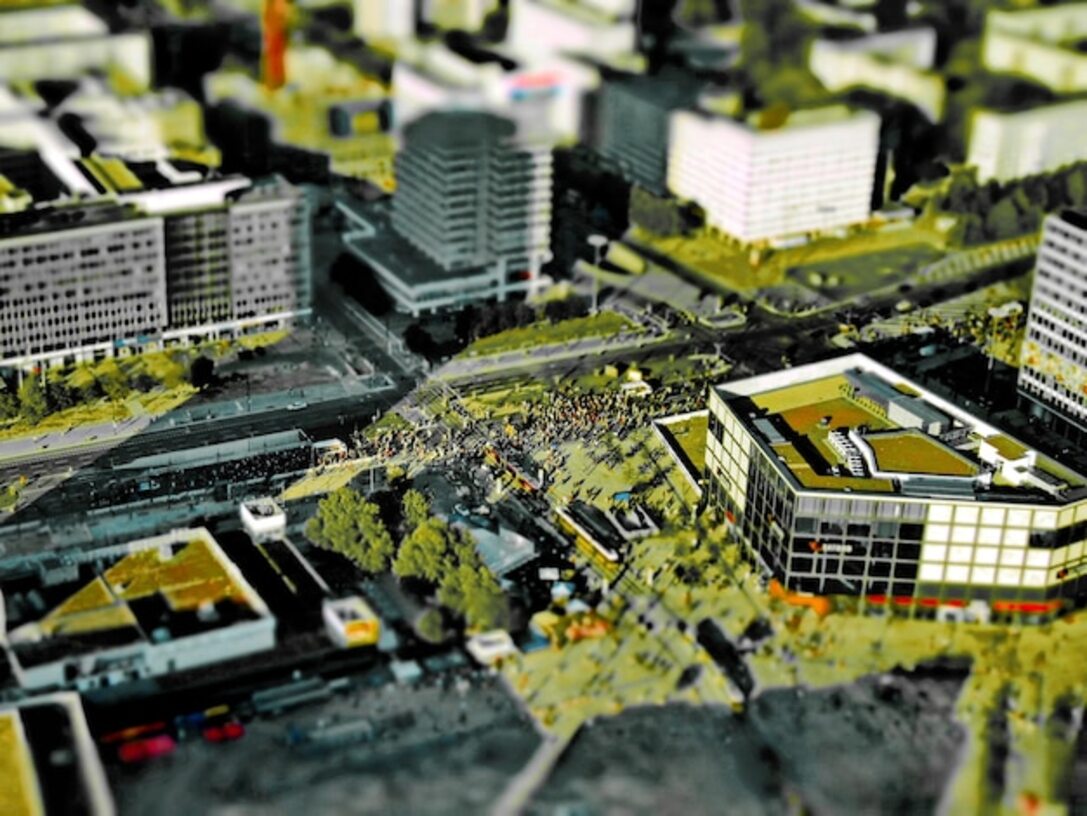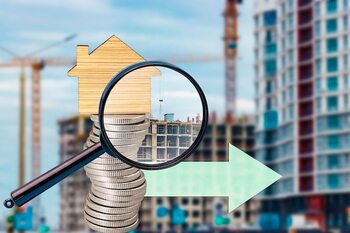The influence of the community on the appreciation of emerging areas

The community plays a fundamental role in the appreciation of emerging areas, transforming previously neglected spaces into vibrant and desirable places. As new infrastructures are developed and active participation from residents is encouraged, property values increase significantly. This article will explore how social cohesion, local initiatives, and civic engagement are key factors that enhance the appeal of these growing areas, making them irresistible opportunities for investors and buyers alike.
The importance of a sense of belonging in community development
The sense of belonging is a crucial component in community development, as it fosters the connection between residents and their environment. When people feel like an integral part of their community, they are more willing to participate in local activities, take care of their shared spaces, and collaborate on initiatives that benefit everyone. This social cohesion not only improves the quality of life for the inhabitants but also creates a favorable environment for economic growth. A strong sense of belonging can transform an emerging area, attracting both new residents and investors interested in harnessing the potential of the area.
Additionally, the sense of belonging fosters the creation of strong social networks, where neighbors support each other and share resources. These interactions generate trust and security, essential elements for any thriving community. Community activities, such as local fairs or urban improvement projects, not only reinforce this emotional bond among residents but also enhance the visibility and appeal of the place. By actively engaging in the improvement of their immediate environment, residents contribute to the increase in real estate value and the sustainable development of the area, making these emerging communities increasingly desirable for future tenants and investors.
2. Local initiatives that drive added value
Local initiatives are essential engines in the development of added value in emerging areas. Community projects that seek to revitalize public spaces, such as parks, plazas, and cultural centers, not only beautify the environment but also foster a sense of belonging among residents. By involving the community in the planning and execution of these projects, a collective commitment is generated that strengthens interpersonal relationships and promotes a strong local identity. This type of social cohesion is crucial for attracting both new residents and investors interested in capitalizing on the area's growth.
Additionally, programs such as farmers' markets, craft fairs, or cultural events significantly contribute to the economic dynamism of these areas. These initiatives not only provide opportunities for local entrepreneurs but also create a vibrant atmosphere that attracts visitors and boosts local consumption. The increase in pedestrian and vehicular traffic benefits both established businesses and new ventures alike, resulting in a rise in property values. Together, these local actions form a network of mutual support that transforms previously neglected areas into thriving environments highly valued by their active and engaged community.
3. Infrastructure and services: pillars of urban growth
Infrastructure and services are essential elements that drive urban growth and, therefore, the appreciation of emerging areas. The construction of access roads, efficient public transport, parks, and recreational spaces not only improves the quality of life for residents but also attracts new inhabitants and investors. When a community experiences improvements in its infrastructure, it becomes a more accessible and attractive place, increasing interest in acquiring properties in the area. This type of development is not just physical; it also entails a social transformation that fosters greater cohesion among neighbors, creating a sense of belonging that in turn enhances the value of the environment.
In addition to physical infrastructure, the availability of basic services such as education, health, and commerce plays a crucial role in this process. Communities with well-rated schools, nearby hospitals, and diverse commercial options tend to be more desirable for families and young professionals. These factors contribute to increasing real estate demand in emerging areas by offering amenities that facilitate daily life. Over time, these developments attract additional investments that can lead to new local businesses and cultural projects, thus creating a virtuous cycle that further enhances the area’s value. Thus, we can observe how proper urban planning can radically transform the economic and social destiny of previously marginalized communities.
4. The influence of cultural events in emerging areas
The influence of cultural events in emerging areas is a factor that cannot be underestimated. The celebration of festivals, art fairs, and community events not only attracts visitors but also fosters a sense of belonging among residents. These events provide a platform for local artists to showcase their talent, which in turn elevates the perception of the area as a vibrant cultural hub. As more people begin to recognize the cultural value of the area, the demand for properties and services increases, thus driving up property values.
Moreover, cultural events act as catalysts for local economic development. By attracting crowds, local businesses have the opportunity to thrive and expand, generating employment and strengthening the community's economy. This dynamic creates a positive cycle where increased interest in the area drives more cultural and commercial initiatives. With each successful new event, a positive narrative is established around the emerging area, solidifying its reputation as a desirable place to live and invest.
5. How citizen participation transforms public spaces
Citizen participation is a transformative engine in the revitalization of public spaces. When residents actively engage in identifying their needs and desires, they can influence the design and management of parks, plazas, and streets. This process not only improves the functionality of these spaces but also fosters a sense of belonging and community pride. Initiatives that arise from this collaboration —such as local fairs, cultural activities, or artistic projects— not only beautify the environment but also attract visitors and potential investors, thereby increasing the area's value.
Additionally, citizen participation promotes greater social cohesion by involving diverse groups within the community. The inclusion of different voices ensures that the decisions made truly reflect the collective aspirations and not just those of a few. This can result in a more accessible and welcoming public space for everyone, which in turn increases its use and appreciation by the inhabitants. When citizens see their direct impact on the environment they inhabit, they become active advocates for it, ensuring its maintenance and continuous improvement. In this way, the transformation of public spaces becomes a key factor in enhancing the value of emerging areas.
6. The role of community leaders in local development
Community leaders play a crucial role in local development, acting as catalysts that bring residents together and promote collaboration. These individuals, whether formally elected or recognized for their influence and commitment, have the ability to identify the needs and aspirations of their communities. By fostering spaces for dialogue and participatory decision-making, they enable citizens to feel empowered to contribute to the collective well-being. In this way, social cohesion is strengthened, creating a conducive environment for economic growth and improving quality of life.
Additionally, community leaders are essential in promoting and implementing local initiatives that can transform emerging areas. Their closeness to the residents allows them to be sensitive to the cultural and social particularities of the area, resulting in projects that are more relevant and tailored to local needs. Through activities such as community fairs, training workshops, or urban beautification programs, these leaders not only enhance the sense of belonging among neighbors but also attract the attention of investors interested in participating in the sustainable development of the place. Thus, their direct influence has a significant impact on real estate appreciation and the overall appeal of these transforming areas.
7. Real estate trends in emerging communities
Emerging communities are experiencing a surge in real estate interest, driven by a series of trends that reflect both the needs of residents and opportunities for investors. One of the most notable is the growing demand for multifunctional spaces that combine residences, offices, and recreational areas. This holistic approach not only enhances the quality of life for residents but also attracts young professionals and families seeking dynamic and accessible environments. As these communities develop, property values tend to increase, as buyers look for places where they can live, work, and enjoy leisure time without the need for extensive commuting.
Another significant trend is the revitalization of public spaces through community initiatives that promote local art, farmers' markets, and cultural events. These actions not only strengthen the neighborhood's identity but also foster a sense of belonging among residents. Active participation in such projects has proven to be a catalyst for improving the area's perception and increasing its appeal to new buyers and tenants. Additionally, collaboration among neighbors facilitates sustainable and responsible development, which is a highly valued aspect for those interested in investing in areas with long-term potential.
8. Sustainable projects: a long-term investment
Sustainable projects in emerging areas not only benefit the environment but also represent a long-term investment for owners and developers. The implementation of eco-friendly practices, such as building structures with recycled materials or installing renewable energy systems, not only reduces the carbon footprint but also increases the area's appeal. Today's buyers are increasingly aware of sustainability and seek properties that reflect these values. By incorporating green elements into urban development, a community is transformed into a more desirable and efficient place, which can translate into a significant increase in its value.
Additionally, sustainable projects tend to foster a sense of belonging and social cohesion among residents. Initiatives like community gardens, landscaped public spaces, and recycling programs can bring people together and create a vibrant local culture. This type of civic engagement not only improves the quality of life in the neighborhood but also attracts new investors interested in areas where communities work together for a better future. As these initiatives take hold, real estate values tend to increase, turning each sustainable project into a strategic opportunity for those willing to invest today in the tomorrow of their communities.
9. The impact of migration on land valuation
Migration is a phenomenon that significantly impacts land valuation, especially in emerging areas. As people from different backgrounds move to these areas in search of better job opportunities and quality of life, they bring with them a cultural and social diversity that transforms the environment. This influx of new residents not only contributes to demographic growth but also drives demand for services, infrastructure, and housing, which in turn elevates land value. More diverse communities tend to attract investments in local commerce and urban development, creating a multiplier effect on appreciation.
Moreover, migration can alter the existing social dynamics in an area. When new groups settle, community initiatives may arise that promote cohesion and a sense of belonging among residents. These types of social interactions strengthen the community fabric and create an environment conducive to local economic development. Investors and real estate developers recognize this potential: areas with an active migrant population tend to experience a rapid increase in property value due to the creation of inclusive and attractive living spaces. In conclusion, the positive impact of migration on land valuation highlights how emerging communities can greatly benefit from welcoming new inhabitants willing to contribute to the collective well-being.



